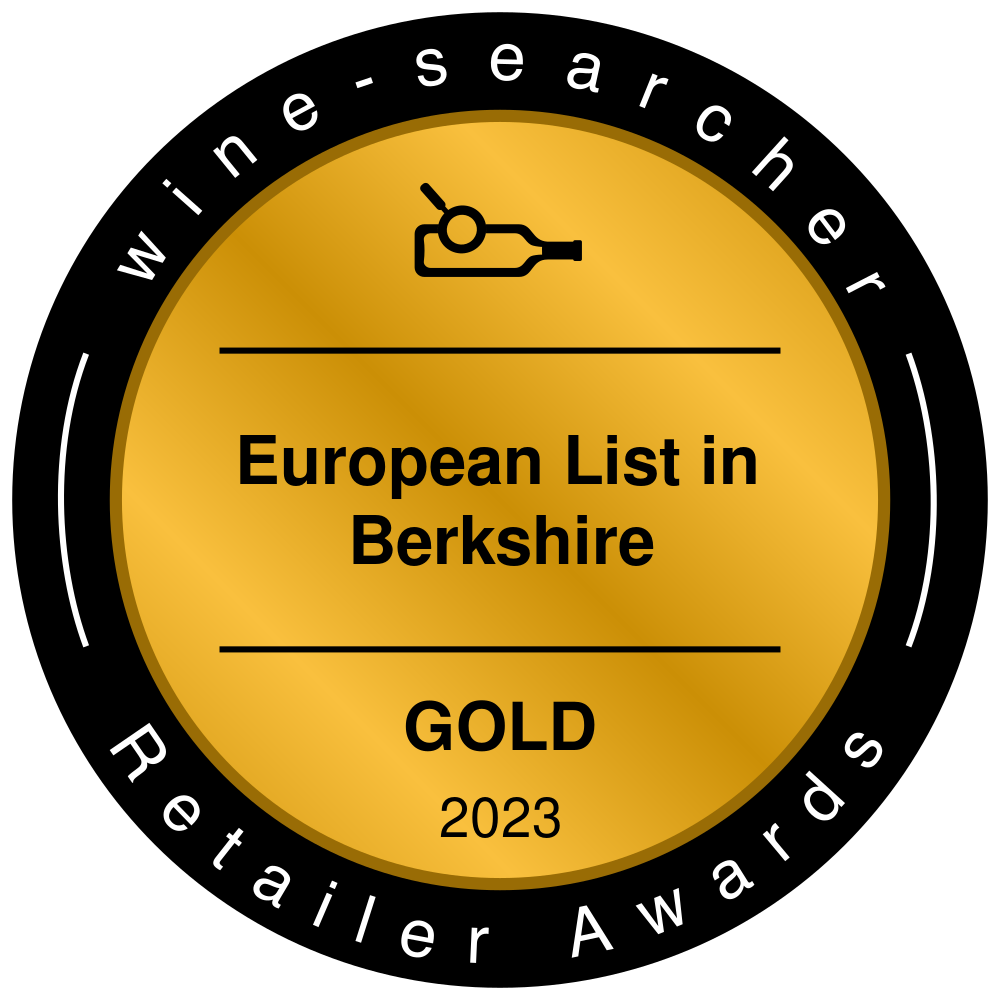Eton Vintners
ORGANIC, BIODYNAMIC
AND NATURAL WINE
Wine is perceived as one of the most natural and healthy of alcoholic beverages. Consumers might be surprised to discover that the majority of everyday wine is produced using a wide variety of chemicals, both in the vineyard and the winery, traces of which can end up in the final wine (ever wondered why cheap wine gives you such a headache?). A vineyard is almost unique in that vines cannot be crop rotated, and cannot be left to lie fallow. As a consequence the use of agrochemicals over time leads to a build up of pathogens and a depletion of soil health. This weakens the vine, creating a cycle of dependency on chemical treatments. As vineyards become “green concrete” wine makers are waking up to the fact that high input farming using synthetic herbicides, pesticides, fungicides and fertilizers is becoming unsustainable. At the same time consumers are becoming more aware of the ingredients in the food and drink they buy, looking for healthier, additive free options. The coming together of these two phenomena has resulted in a number of alternatives for the thoughtful and environmentally conscious wine consumer, but what are the difference between the various classifications, and which, if any, has any real meaning?
ORGANIC
Organic producers will only make good wine if they also made good wine before becoming organic. This may seem self evident, but organic certification is - at its simplest - adhering to a list of chemicals not to add to your vineyard. Tick the list and you can be certified organic, irrespective of the quality of what you produce. An oven pizza may be labelled organic but it's not exactly haute cuisine. Requirements for organic certification vary widely around the world, with many countries not “recognising” each others accreditation, so there are plenty of grey areas. To add further confusion, in the EU organic accreditation covers only the grapes, and not what happens in the winery. Hence you will only ever see an EU wine labelled as “made from organically grown grapes”. Think of the organically grown lettuce that is treated with chemical preservatives to keep it fresh on the supermarket shelf. Organic therefore is no guarantee that a wine has not had chemicals used in the processing of it. There are many superb examples of high quality organic wineries, but the term should be treated with caution unless you know the producer in question, or trust the place or person you buy it from.
BIODYNAMIC
Biodynamics requires a much greater commitment from the grower and is often referred to as “super-charged” organics. Rather than simply reducing chemical inputs, biodynamics is a proactive attempt to bring life to the soil by the use of composts and organic preparations. Biodynamic vineyards always “feel” alive and healthy. Practices take into account the seasons as well as lunar and solar rhythms, which would not have seemed strange to our ancestors. Rudolph Steiner founded the biodynamic movement in the 1920s in an attempt to bridge the two worlds of modern science and what he referred to as “peasant wisdom”. Some critics are sceptical of the more arcane elements of biodynamics but often concede that the end result is better tasting wine. This may simply be down to the old maxim that the best fertilizer is the farmers footsteps. Some of the worlds leading wine producers are now working biodynamically including Felton Road (New Zealand), Domaine Leflaive (Burgundy) and Zind-Humbrecht (Alsace). For many it is a practical and sustainable farming solution, and as such you will not always see it written on the label or used as a marketing tool. Biodynamic certification is a sound guarantee of responsible environmental practice, the wines should always have a clear sense of place (terroir) and quality can be exceptional.
NATURAL WINE
Natural wine is a relatively recent phenomenon, but one that is currently at the cutting edge of the wine world. In its simplest form, natural wine takes organic or biodynamic practices in the vineyard as its starting point, and extends them into the winery in an attempt to reduce the total use of chemical inputs and manipulations throughout the entire production process. The key difference is often the low or zero use of sulphur dioxide (SO2). Natural wine is not an accredited or legally defined term, but refers to a broad range of desirable practices both in the vineyard and the winery. These include the use of organic or biodynamic treatments to bring life to the soil, hand harvesting, no chapitalisation (added sugar to raise potential alcohol), no added enzymes, natural wild yeasts, no added “flavourings” or adjustments (oak chips, tannin powder, acidification or de-acidification), low or zero use of sulphur dioxide through ferment and elevage, no or very light filtration and fining and finally low or zero sulphur additions at bottling (understood to be less than 20ppm for white, 10ppm for red). In essence, nowt taken out and nowt put in.
There is also a recognisably “natural wine style” emerging, which for many is the chief allure of this category. For some it is also its biggest weakness. At their best, natural wines display lightness and purity of fruit. They have higher levels of acidity, often combined with more restrained levels of alcohol, for reds often in the 11 to 12.5 range, yet are fully flavour ripe. They are lean, fresh, mineral and often have little or no new oak. As a result they can be incredibly drinkable. They can also be nutritious in the true sense of the word, being living products, they appeal to the stomach as well as the palate. Think Yakult or unpasturised cheese. The driving philosophy of many natural wine makers is simply to make a wine that they can drink a lot of, which may sound strange, even irresponsible, until you consider that many “modern” show-stopper wine styles can impress with a sip, but are impossible to finish the bottle. Natural wine can often be simple, but what they lack in weight or complexity they make up for in drinkability and fun.
Like biodynamics, natural wine is a trustworthy sign of environmentally friendly vineyard practices as well indicating the minimal use of additives and chemicals inputs in the winery. As such it is the most “organic” of the accreditations if by organic we mean low chemical additives. In addition natural may also signal a recognizable style of wine. This style may not be everybody's cup of tea, but ultimately this will depend on whether you like your apple juice cloudy, your cheese stinky and your milk straight from the cow. The proof of the pudding will always be in the drinking, and the best bottle on the table is always the empty one.
ORANGE OR SKIN CONTACT WINE
Orange wine is also known as skin-contact white wine. Skin contact is another term for maceration, or the period during winemaking when the grape skins remain in contact with the juice, the same process in making red and some rosés wines. Most red wines are made by fermenting grapes with their skins for the entire period of alcoholic fermentation, though the juice can be separated earlier if the winemaker seeks lighter taste or body. Rosés usually undergo less than 12 hours macerating on their skins before the juice is pressed off and fermentation is allowed to finish, though some can rest on their skins for up to a week. With white grapes, if you let the juice ferment on the skins, it extracts additional tannin and flavor, just like in red wines. In this case the juice of white grapes is left to ferment on the skins and it extracts additional tannin and flavour, just like in red wines and becomes darker.
The colour is closer to straw than apricot, the nose and palate of skin-contact whites reveal a very different kind of wine. The aromas are bolder and more intense than if the same grapes were vinified as traditional white wine. It’s akin to the difference in intensity between rosé and red wine. The palate has deeper flavours as opposed to breezy citrus. Skin contact draws out fleshy apricot and intense floral notes in some wines, particularly if the maceration is long. One of the most surprising aspects of skin-contact whites are their tannins, something associated typically with red wines and some rosés. Skin-contact whites with months-long macerations can be quite full and roughly textured.
Happy Hunting!
My favourite wine shop. Fantastic selection of wines for every budget, the staff are knowledgeable and friendly. Eton Vintners also stock the most amazing hampers at Christmas. I can not resist popping in when I am in the area, but I mainly take advantage of their excellent home delivery service.
A lovely wine shop in the centre of Windsor. They had a fairly wide variety of wines for the size of the shop, including an excellent selection of organic/natural wines. I picked up a French wine from Alsace and a Georgian wine and was very happy with both of them.
The range of wines at Eton Vintners is fantastic! I absolutely love all their vintage wines, what an excellent find. Will definitely be coming back for more.
My favourite wine shop. Fantastic selection of wines for every budget, the staff are knowledgeable and friendly. Eton Vintners also stock the most amazing hampers at Christmas. I can not resist popping in when I am in the area, but I mainly take advantage of their excellent home delivery service.
I've used Eton Vintners for many years and have always found the staff unfailingly helpful and wise. The wine selection is fantastic - the shop is an Aladdin's cave of variety, plus they take care to avoid mass-produced liquid that passes for wine elsewhere with made-up labels. Highly recommended, especially the Bordeaux selection but all geographies are good. Delivery service is also great - never had a hitch.
Awards & Recognition

Australian List in Berkshire Gold | 2019

New World List in Berkshire Gold | 2019

Italian List in Berkshire Gold | 2020

Overall List in Berkshire Gold | 2023

French List in Berkshire Gold | 2023

European List in Berkshire Gold | 2023